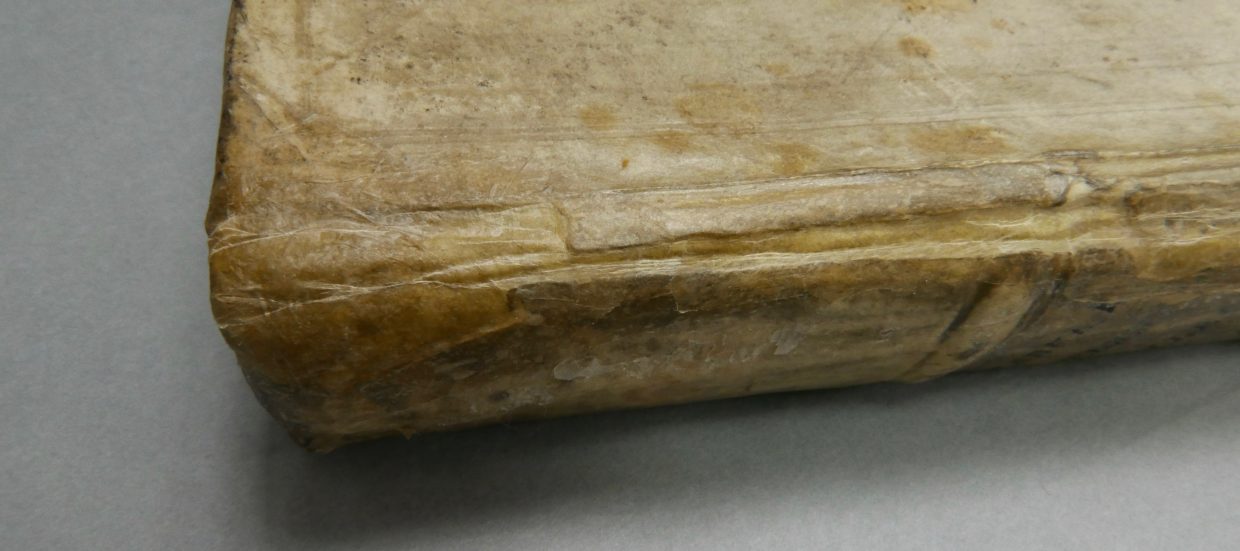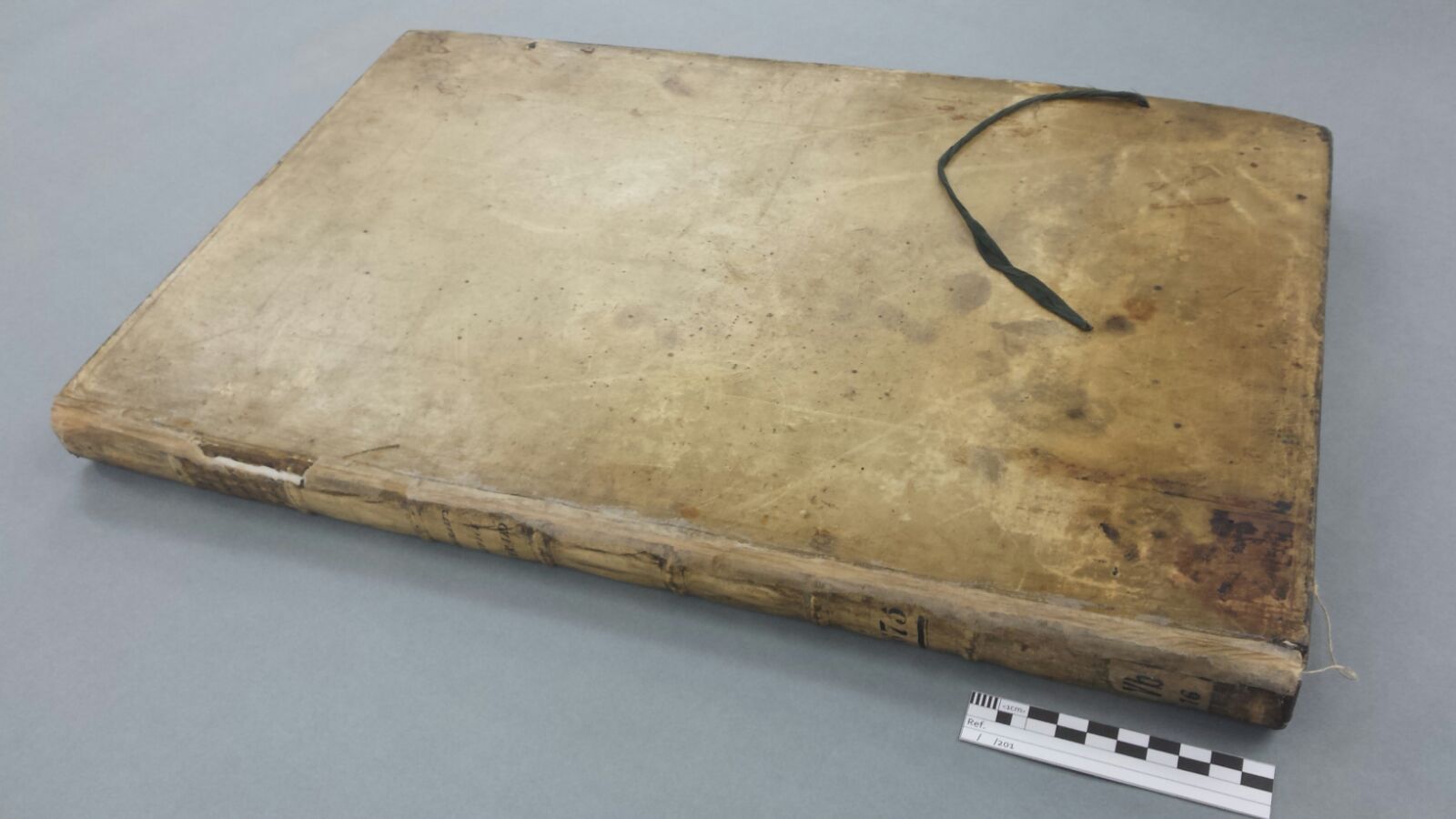 The cover of the 17thcentury atlas is constructed of pasteboard covered in parchment. The spine was originally a tight back; a previous treatment turned it into a hollow back, which was causing the parchment to tear at the head and tail. The torn outer joint was removed to rectify the spine situation, which revealed the board attachment was not secure. This was also reversed. The existing slot in the edge of the detached board was made deeper and excess material was removed. The board fibers inside the slot were consolidated with wheat starch paste to make the board attachment easier. Linen fibers from sewing chords were mixed with wheat starch paste and used to build up weak areas in the edge of the board.
The cover of the 17thcentury atlas is constructed of pasteboard covered in parchment. The spine was originally a tight back; a previous treatment turned it into a hollow back, which was causing the parchment to tear at the head and tail. The torn outer joint was removed to rectify the spine situation, which revealed the board attachment was not secure. This was also reversed. The existing slot in the edge of the detached board was made deeper and excess material was removed. The board fibers inside the slot were consolidated with wheat starch paste to make the board attachment easier. Linen fibers from sewing chords were mixed with wheat starch paste and used to build up weak areas in the edge of the board.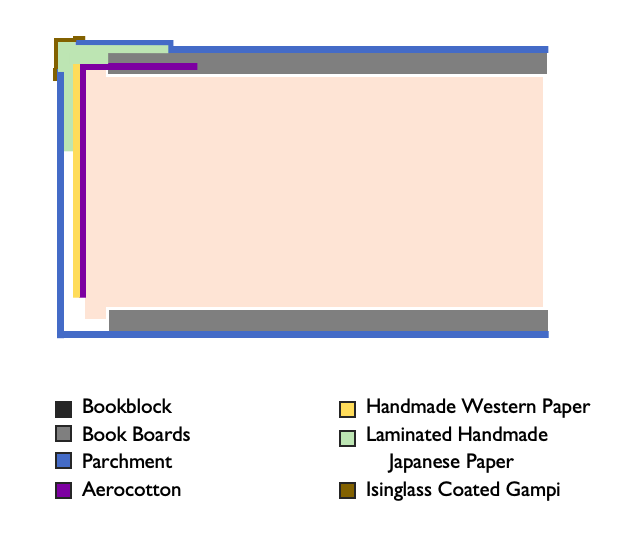
Handmade Western paper was laminated to an aerocotton lining (wide enough to be used as the board attachment) with wheat starch paste and adhered to the spine, between the sewing cords, and ticketed in place using linen thread.
The board was positioned on the bookblock and reattached once the consolidated board and spine linings dried. This was done by applying wheat starch paste to both sides of the slot and inserting the aerocotton from the spine. It was dried open under weight.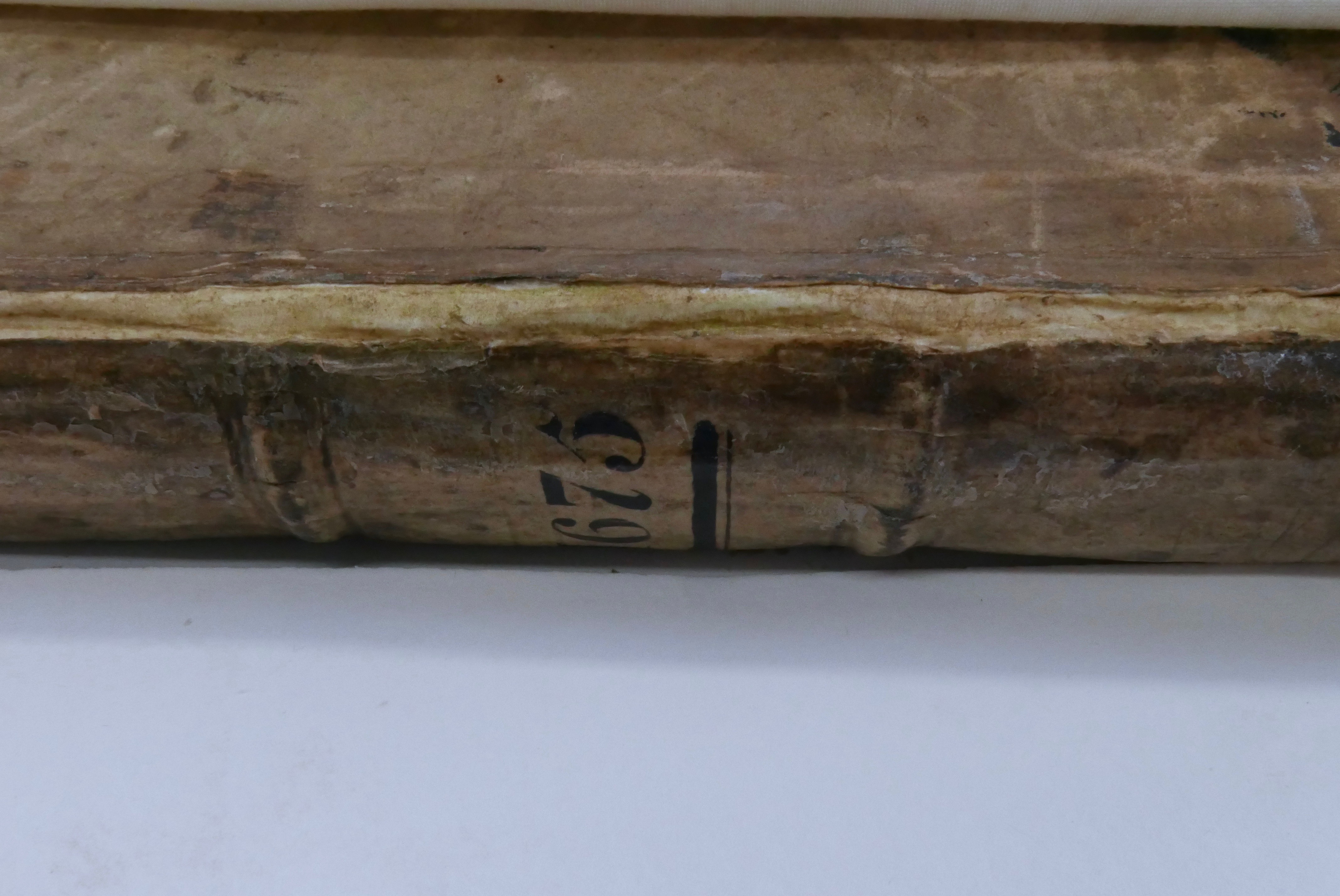
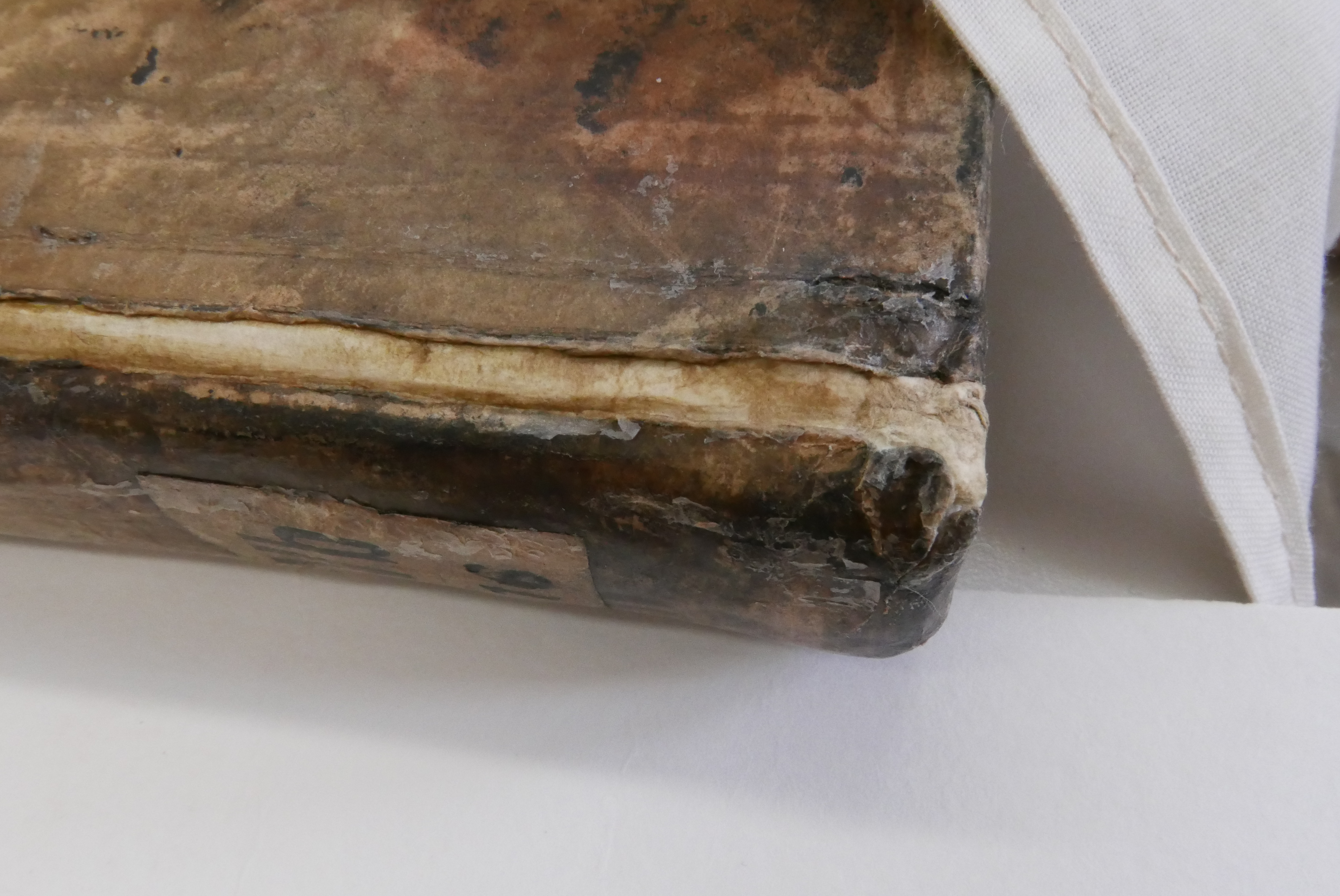
Laminated layers of handmade Japanese paper were adhered to the board under the lifted parchment on the edge and down onto the still exposed spine. This aids in stabilizing the board attachment and acts as an infill where the split parchment has shrunk and retracted. Blotting paper was used to build up the splits in the endcaps.
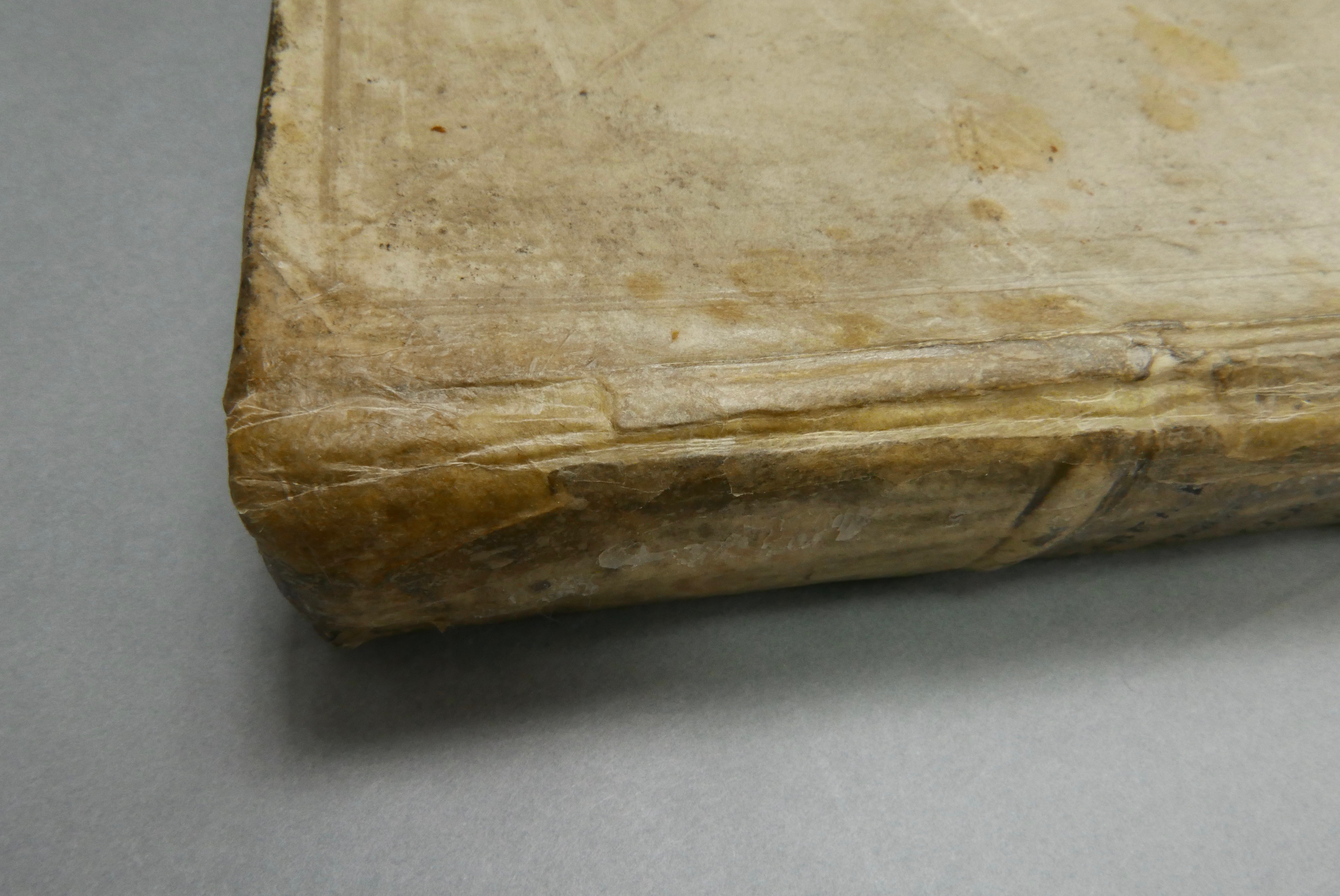
30% (w/v) cool liquid gelatin was used to adhere the parchment spine to the spine of the bookblock and to adhere the parchment that was lifting from the board. The Japanese paper and blotting paper were toned in situ with watercolor before two layers of gampi, dyed then coated in isinglass, were applied over the top of the exposed Japanese paper and adhered to the edges of the parchment. It was applied with cool, liquid gelatin which provided the repair with a similar look and texture to the parchment.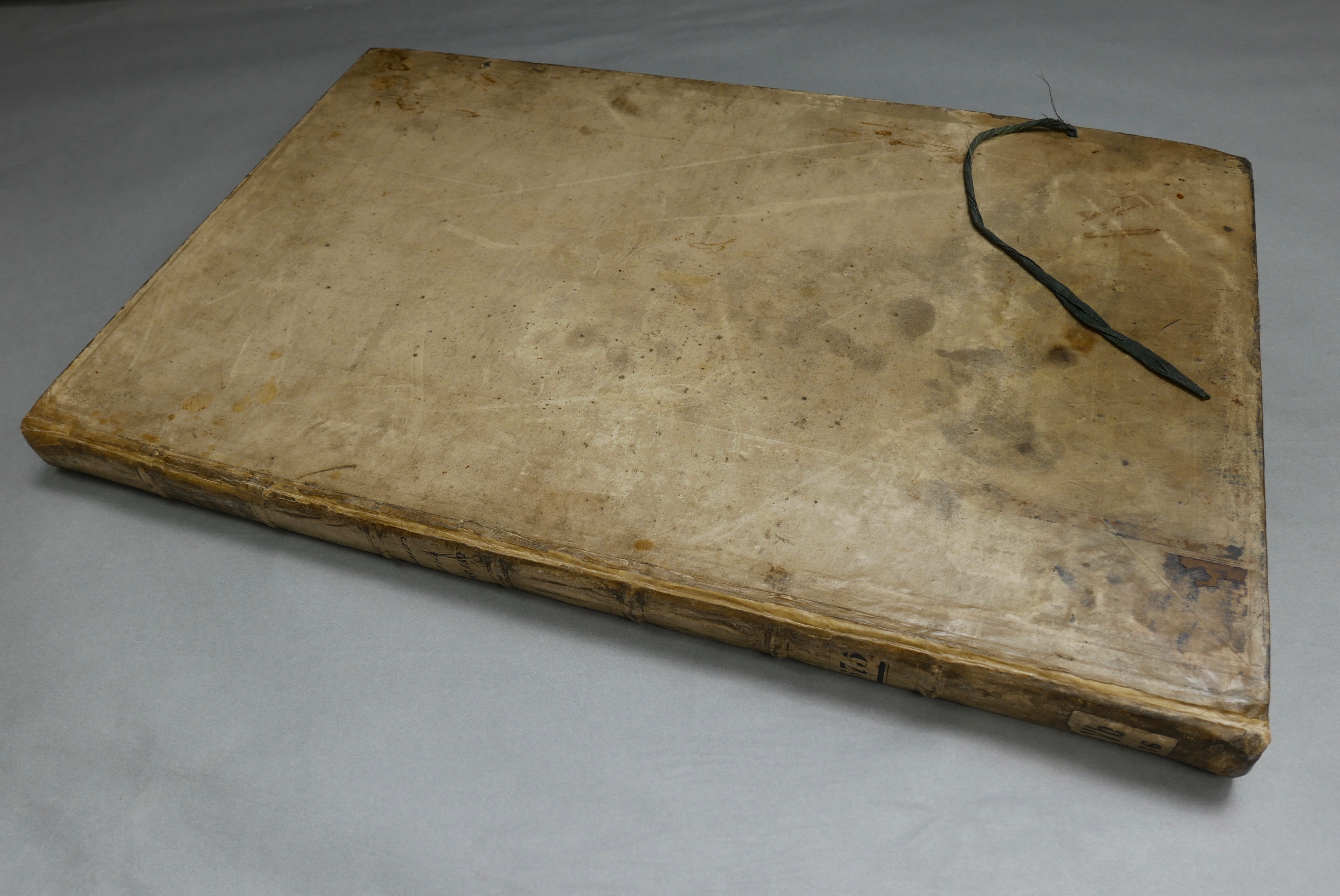
Be sure to read Tabula Atlantis: Part 1 see what was done to the inside of this beautifully illustrated volume!
